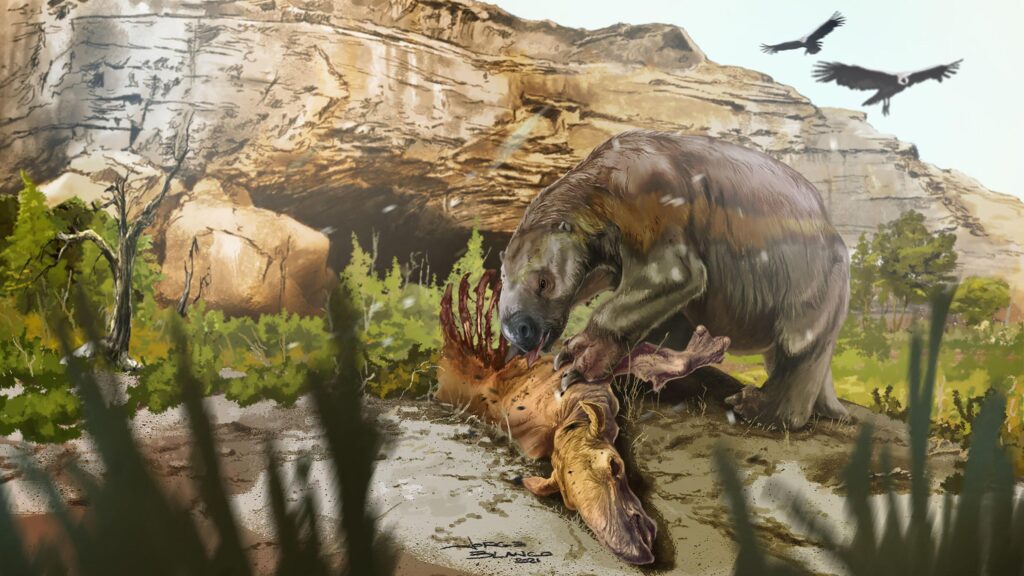The earth once echoed with the slow, deliberate movements of giant sloths-colossal creatures whose imposing presence dominated prehistoric landscapes. Recent scientific investigations, highlighted in a new study published in Science, shed light on the rise and eventual extinction of these fascinating megafauna. By unraveling their evolutionary history and the environmental pressures that sealed their fate, researchers offer fresh insights into how climate change and human activity intertwined to reshape ecosystems and erase a chapter of natural history.
Giant Sloths Rise to Ecological Dominance in Prehistoric South America
During the Miocene and Pleistocene epochs, giant sloths evolved into some of the largest terrestrial herbivores in South America, reshaping entire ecosystems through their unique grazing and browsing habits. These colossal creatures, some reaching the size of modern-day elephants, played a pivotal role in maintaining the balance of prehistoric forests and grasslands. By selectively feeding on vegetation and dispersing seeds, they influenced the composition of plant communities and created habitats that supported diverse fauna. Their slow metabolism and massive size deterred most predators, allowing them to flourish for millions of years.
Key ecological impacts included:
- Regulation of forest undergrowth density
- Promotion of seed dispersal for large-fruited plant species
- Creation of nutrient-rich soil patches through dung deposition
- Serving as prey for apex predators and scavengers, fostering a complex food web
| Species | Estimated Weight (tons) | Dominant Epoch |
|---|---|---|
| Megatherium americanum | 4-5 | Pleistocene |
| Eremotherium laurillardi | 3-4 | Pleistocene |
| Glossotherium robustum | 1.5-2.5 | Miocene-Pleistocene |
Climate Change and Human Activity Drive the Extinction of Megafaunal Giants
Over the past millennia, the fate of colossal creatures like giant sloths has been sealed by two interconnected forces: climatic upheavals and the expansion of human societies. As ice sheets retreated and warmed Earth’s environments, vast ecosystems transformed, challenging the survival of species adapted to colder, stable habitats. In tandem, the arrival of early humans introduced novel pressures such as hunting and habitat manipulation, accelerating the decline of these prehistoric titans. Archaeological findings now reveal how these factors combined, leading to an unprecedented wave of megafaunal extinctions.
Recent studies underscore the complexity behind these losses, highlighting:
- Rapid climate fluctuations disrupting food sources and migration patterns
- Human-driven habitat fragmentation limiting the available ranges for giant sloths
- Direct hunting impacts evidenced by butchery marks and tool residues on fossil remains
| Factor | Impact on Giant Sloths |
|---|---|
| Temperature Shifts | Reduced suitable habitats by 40% |
| Human Hunting | Population decline of 70% in 2,000 years |
| Vegetation Changes | Loss of key food plants |
New Conservation Strategies Draw Lessons from the Giant Sloths’ Ancient Decline
Emerging conservation initiatives are increasingly inspired by the story of the giant sloths, whose ancient decline offers critical lessons on ecosystem management and species preservation. The massive megafauna, once roaming vast territories in prehistoric Americas, vanished due to a combination of climate shifts and human pressures. By scrutinizing the timing and causes of their extinction, scientists are highlighting the importance of proactive habitat conservation, mitigating human impact, and maintaining ecological balance, especially in regions home to large, slow-reproducing species.
Key takeaways shaping modern conservation efforts include:
- Habitat Connectivity: Ensuring migration corridors to support genetic diversity and seasonal movements.
- Human-Wildlife Coexistence: Developing strategies that minimize conflict and overexploitation.
- Climate Adaptability: Protecting ecosystems vulnerable to rapid environmental changes.
| Conservation Strategy | Lesson from Giant Sloths |
|---|---|
| Preserve Large Habitats | Needed to sustain wide-range megafauna populations |
| Control Hunting | Human overhunting accelerated extinction rates |
| Monitor Climate Impact | Sudden climatic shifts reduced available resources |
In Summary
The story of giant sloths, from their rise as towering herbivores to their eventual disappearance, offers a captivating glimpse into the dynamic forces shaping Earth’s prehistoric ecosystems. As scientists continue to unearth clues about these remarkable creatures, each discovery not only illuminates the past but also deepens our understanding of extinction processes in the face of environmental change. The legacy of giant sloths endures, reminding us of the fragile balance between species and their habitats-and the profound impacts that shifts in climate and human activity can impose on the natural world.
